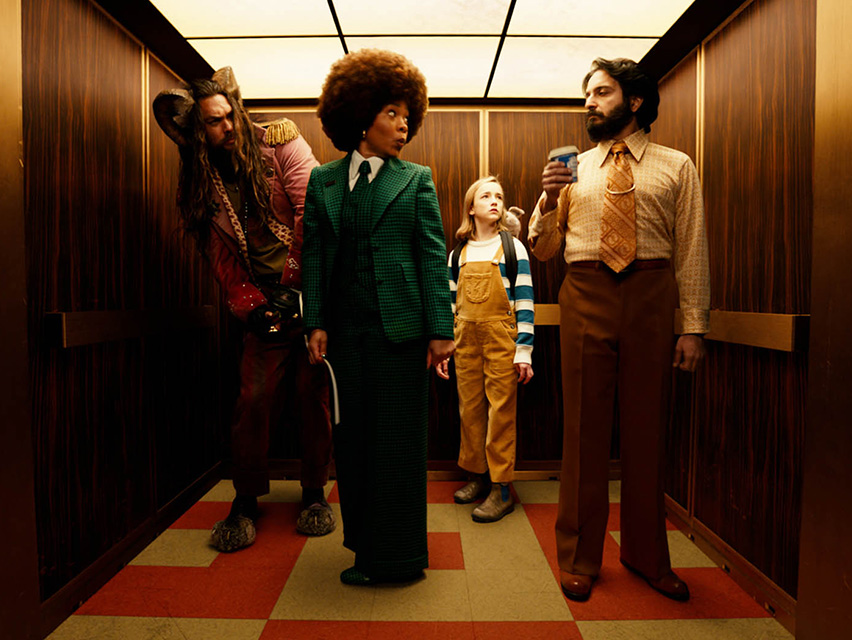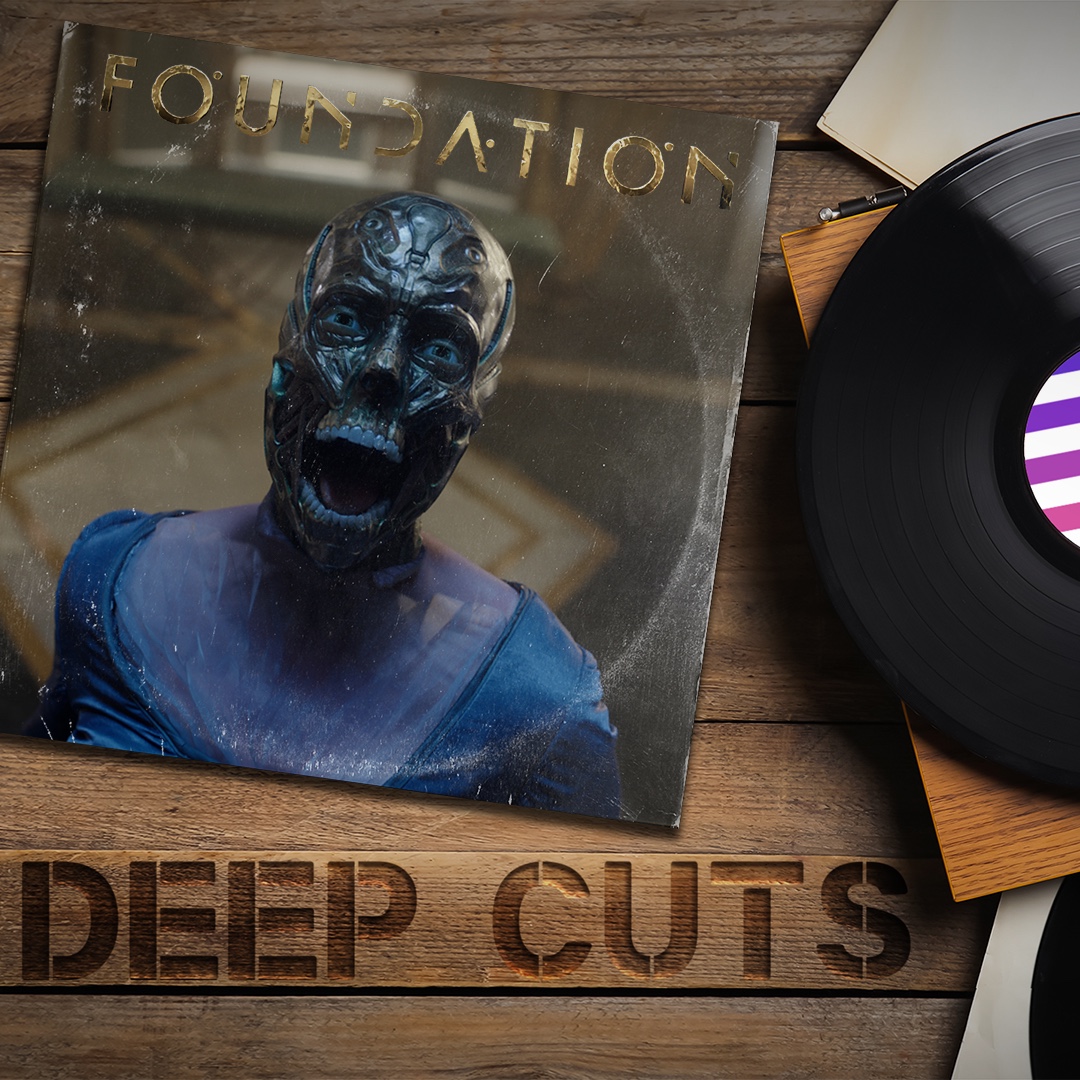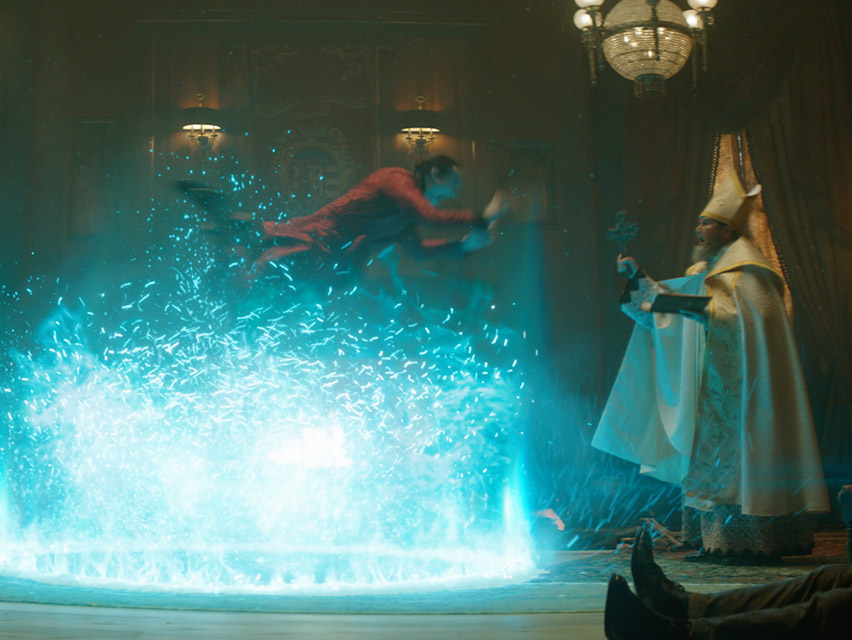Be the first to know — Get Outpost's monthly newsletter for news, tips and job opportunities.
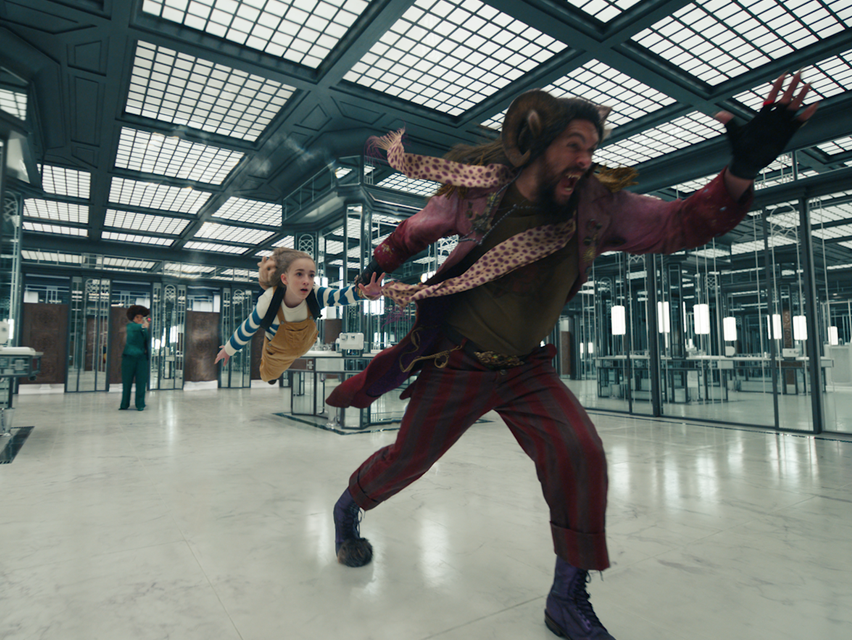
News
Freeze! How Outpost Montreal froze Momoa mid-air in Netflix’s Slumberland
18 January 2023
What happens if you fire a freeze gun at Jason Momoa and Marlow Barkley? We speak to the team behind one imaginative Slumberland sequence
Given the scope of the inventive project, Outpost jumped at the chance to join the production, and work began in early 2022. But it soon became clear that the Montreal team would be put to the test if they were to bring the dreamworld to life. For Lead CFX Artist, Benjamin Condy, one sequence stands out in particular. “Definitely the frozen shot,” he said. “It was the bulk of my work on the show, and it was one of the most complex scenes we had to do.”
In the scene, Flip and Nemo are caught by Agent Green (Weruche Opia). Green fires her freeze gun at the pair, suspending them in mid-air. The sequence would present many challenges, including Flip’s furry ears and Nemo’s anthropomorphic pig plushie which would require fur sim and animation. Not only that, the camera rotates around the actors, and was filmed in a mirrored room – the cast and crew reflecting off each surface.
“The shot is 1,242 frames long – around 52 seconds – and the camera is going 360-degrees around the characters,” said Condy. “It’s quite close to them, so you can’t really hide anything. I was responsible for the cloth and hair simulation for Flip and Nemo and CFX Artist Kira Urquhart did the last pass of fixes.”
Condy, Urquhart and team had to be selective with the simulation, choosing just the relevant parts of the shot. He adds: “Otherwise, if I had to change the end part of the shot, I would have to re-simulate from the start, which would have taken a lot of time.”
Condy adds: “For cloth and hair, I decided to simulate the start of the shot when the characters are running, and then the end where the characters are back to moving again. In the middle of the shot, when the characters are frozen in mid-air, I froze my last frame of the simulation and deformed the cloth and hair with some slow-motion noise. Then, at the end of the shot, I restarted the simulation.”
Flip’s furry ears, costume and Momoa’s signature hair and beard all had to be considered. Condy adds: “Flip has a long coat with shoulder tassels, a scarf, a pocket-watch chain, and several necklaces, so I had to make all of these elements work together and flow in slow motion. The coat drove everything, as it was the most important element, with the rest of the objects reacting to it.”
Given the length of the sequence, Senior Compositing Artist, Renaud Quilichini, was meticulous when it came to compositing. He said: “The main difficulty was that the clothes and hair were both in front of and behind the actors because the camera rotates around them. I relied on the roto-anim of those characters to deepholdout the bodies from the clothes and hair, which gave me a base to work from. Then I used the partial roto from the roto team, supplemented by my own roto to mask what was in front and behind. I then warped the clothes and hair where it was needed to adjust it and pin it onto the actors.”
He adds: “Creating the shadows of the clothes and hair on Jason Momoa's body was also no small task. The roto-anim was not precise enough to be able to rely solely on a CG shadow matte, so for the most part, I had to draw them by hand as consistently as possible, and I used a warped version of the CG shadow matte here and there for the tricky areas.”
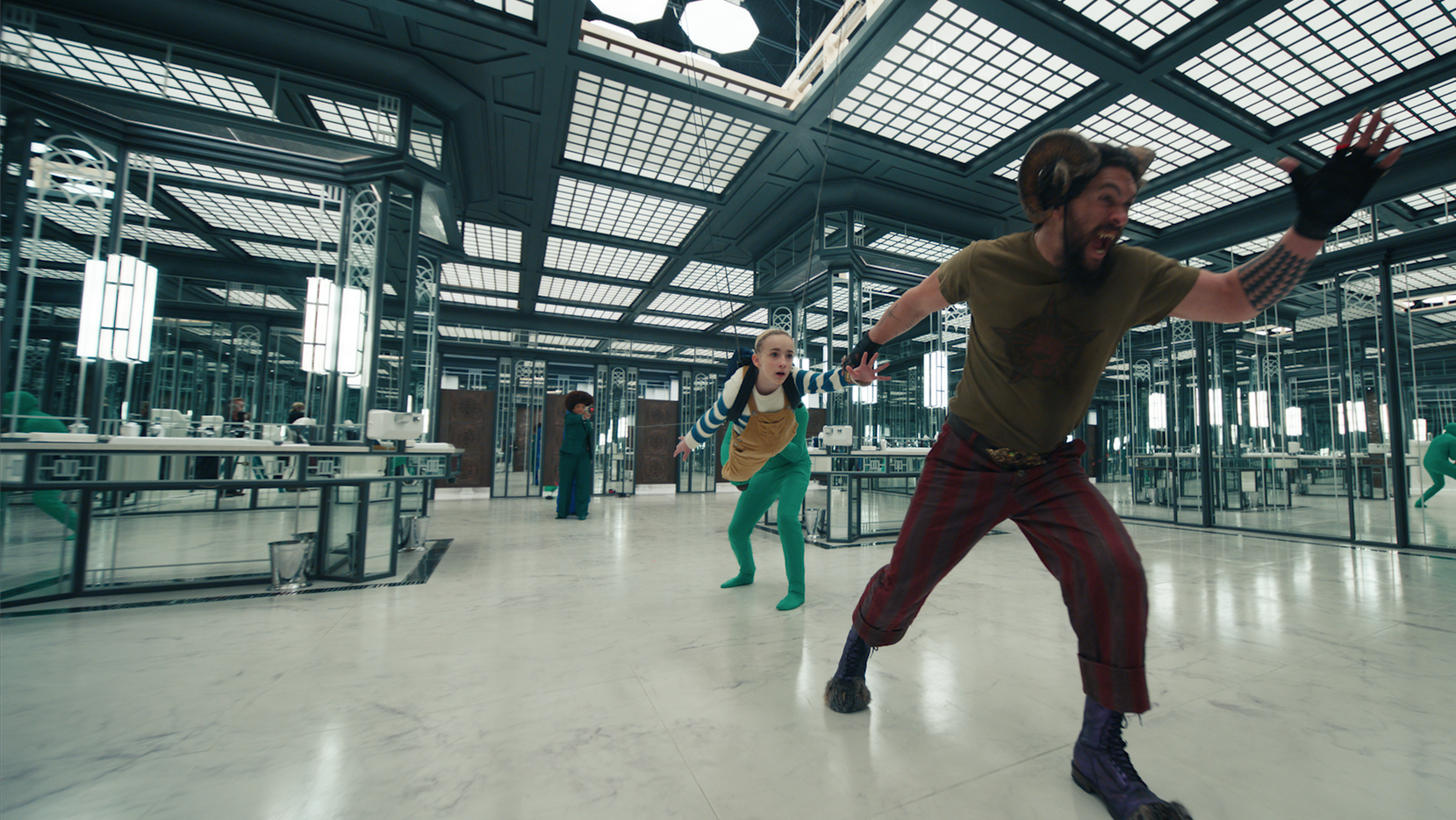
Removing the crew's reflections was just one step of the process
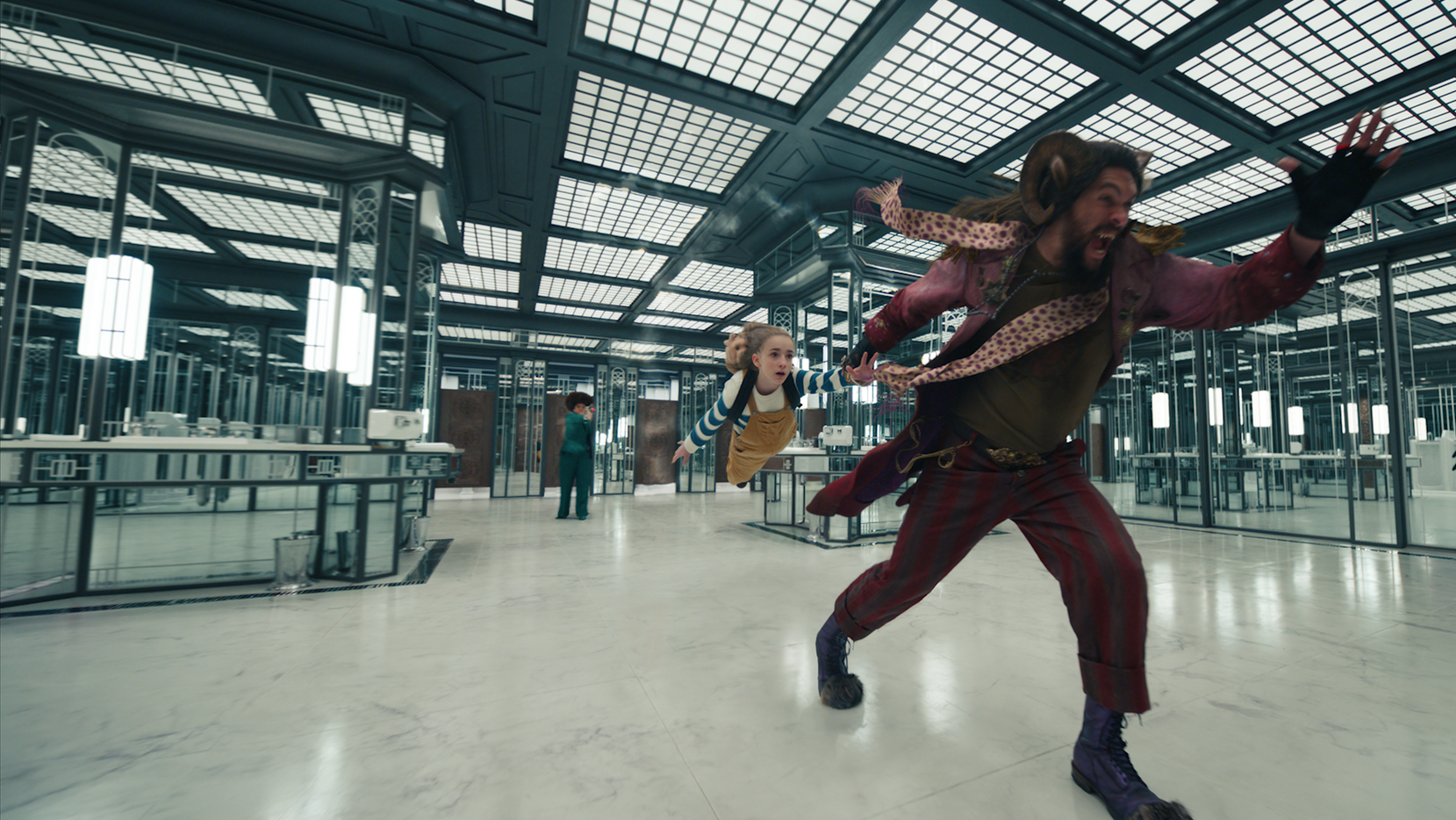
The added CG elements would then need their own reflections
No matter how good your acting, it’s impossible to remain perfectly still for a whole minute, so the team would have to work best with what they had. Quilichini said: “In a good portion of the shot I had to stabilise the actors, and the CG tracked onto them as they were trying to stay still but were visibly moving.”
Condy adds: “The actors did a good job, but they couldn’t stop immediately. They had to slow down somehow, and this created some weird behaviour on the simulation as it looked like everything slowed down before it stopped in mid-air. I retimed the CG animation and used some fields to have a nice pose.”
One other character in the film would require a different type of work from Flip and Nemo. Nemo is never found without her trusty plushie, Pig. But in the dream and nightmare world of Slumberland, this plushie has a life of its own. Peta Bayley, Outpost Animation Supervisor, was responsible for bringing the character to life, as well as animating other elements, including Flip’s ears. She said: “Being such a charming character, the aim was not to upstage Nemo but to add enough subtlety in the poses and movement to give him presence and personality in each shot.
“Pig is a bit floppy, and jostling around in Nemo's backpack, so there was a balance to achieving his intentional movement while also mirroring Nemo’s. We used Pig's brows, ears and head posing to echo Nemo's emotions and connect him to the scene.”
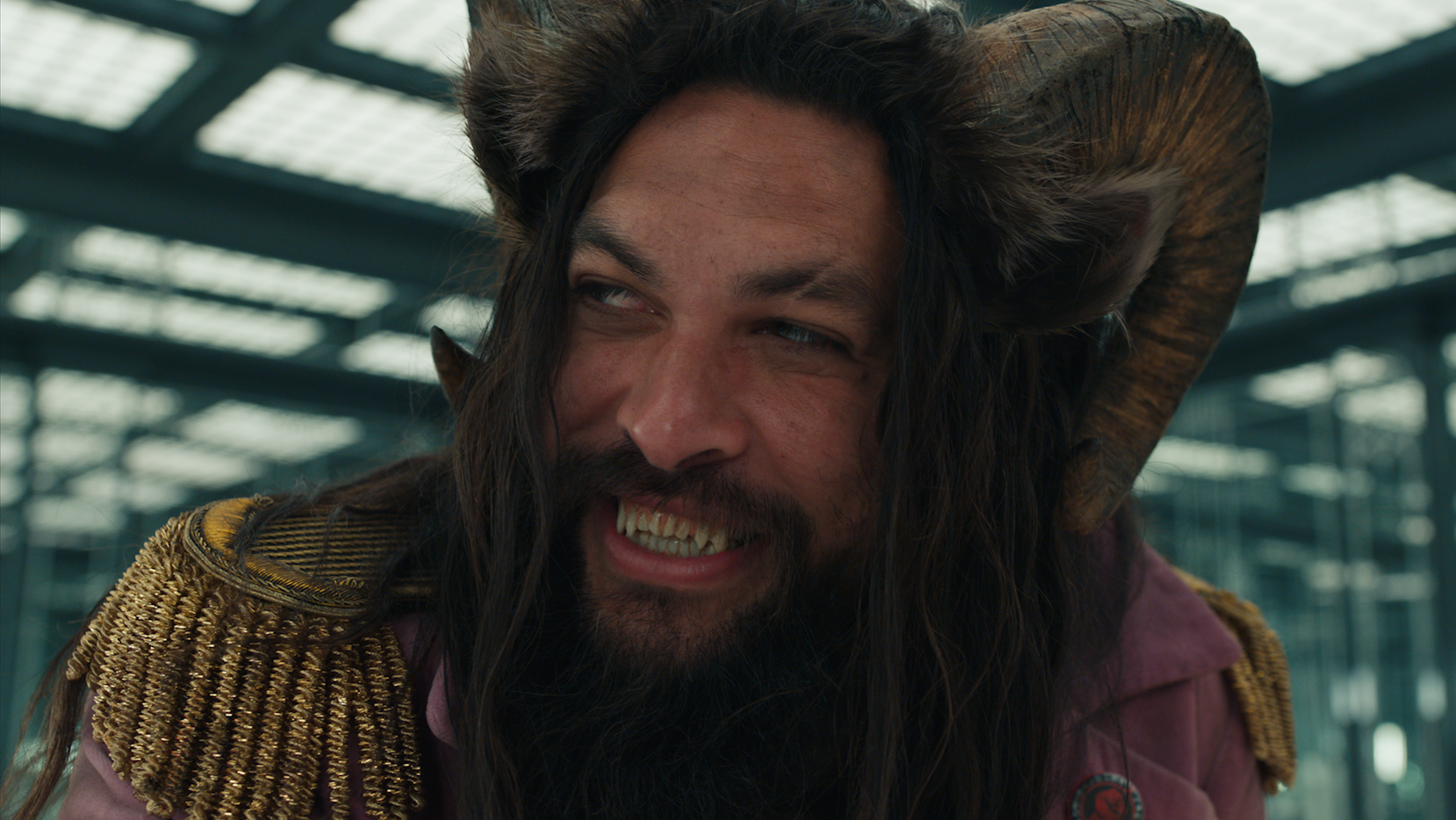
Flip's ears required fur sim and animation in each scene
A similar approach was required with the furry Flip. Bayley said: “Flip’s ears are quite subtle, but there was a lot of additional ear animation to help emphasise his expressive personality and excitable moments. Although you won't notice it, we even kept the backpack alive with movement on the zippers when it was replaced with CG.”
Of course, all this would be much simpler with a fixed camera, but with it rotating around the cast, and Agent Green walking around them, it made things more difficult. Quilichini said: “With Agent Green, the most delicate aspect was the physical interaction with Flip at the end of the shot. It involved complex layering of the CG and the rotoed elements, with a lot of small details to take care of and lots of edge work.”
Condy adds: “It was also in a room full of mirrors, so we had to make sure everything worked with the reflections. Our last pass of fixes was actually because of the mirrors. When I fixed all the slight intersections, I didn't check the reflection, as it was too long just for a quality check render. But when doing the lighting render for the high-quality reflection, we saw some issues with the coat that had to be taken care of. Thanks to Kira, who solved that one!”
The mirrors were also an issue for the Compositing and Paint Team. Quilichini adds: “The nature of the set meant that the original shot featured the reflections – and reflections of reflections – of the crew, including the camera and cable rig for Nemo. An important part of the work was to remove those reflections, while retaining those of the actors. It was a complex and lengthy process on top of integrating CG on the actors themselves. That enormous environmental task was accomplished tirelessly by the Paint Team, and they did a tremendous job!
“For the Compositing team, it also meant integrating the CG reflections of the clothes, floating hair, and Pig, compensating whatever offset there might be compared to the reflections of the actors on the plate.”
With so much work going into the sequence, and the rest of the film, our Montreal team were thrilled with the final product. Quilichini said: “It might have proved hard at times, but overall, it was a really fun and interesting experience on a demanding movie, which is always inspiring.”
Benjamin Condy adds: “You don't have a lot of opportunities in your career to do this kind of shot and do every aspect of it CFX-wise. It was challenging, but very rewarding when everything was assembled, and you see that your technical decisions really paid off.”


